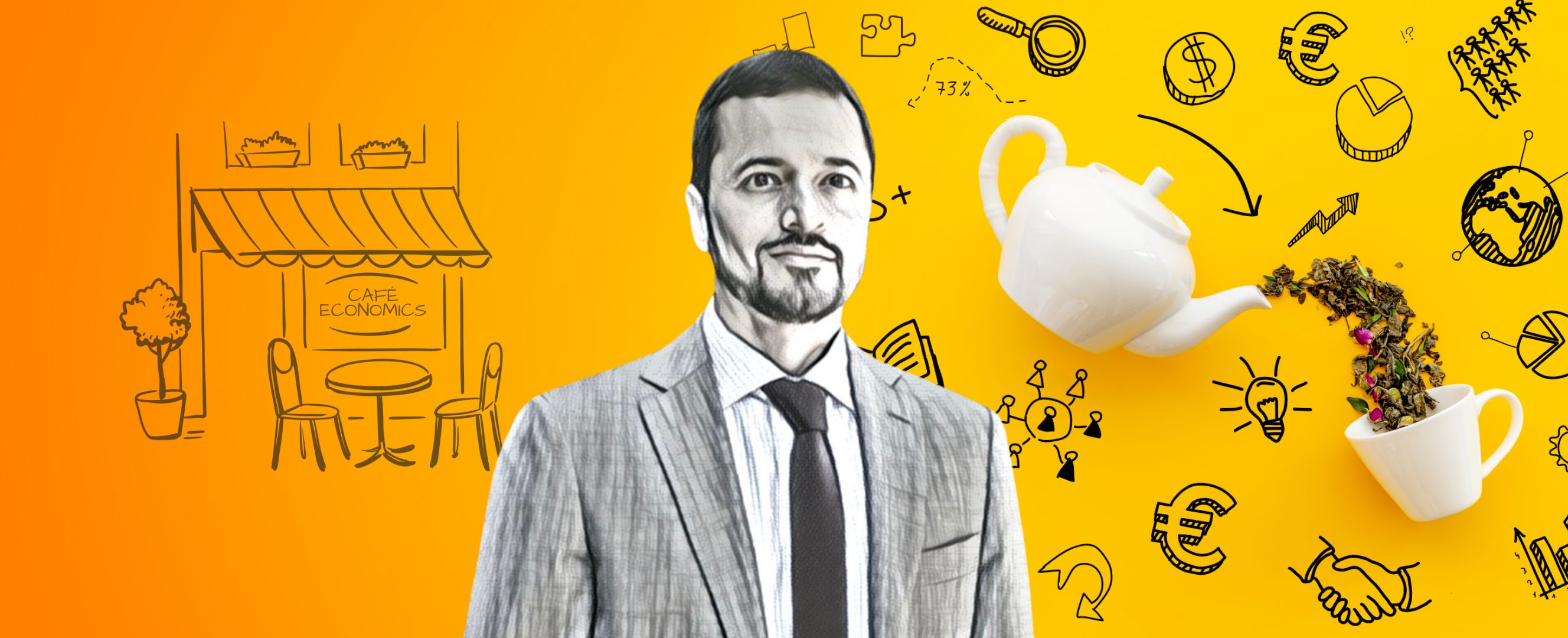Amir Sufi talks about the state of household debt and why he doesn’t foresee a severe global recession
A significant rise in household debt—encompassing all consumer debt and mortgage loans—has historically signaled the possibility of a looming economic recession.
In an interview with IMF economist Paulo Medas, Amir Sufi, professor of economics and public policy at the University of Chicago Booth School of Business, discusses what the state of household debt tells us about a possible recession, the risk from rising inequality, and his prediction on when we’ll return to low levels of inflation and interest rates.
F&D: During the pandemic, debt in the private sector and the housing market did not explode the way it did during the global financial crisis. Why?
AS: Two major differences can explain that. First, in the lead-up to the pandemic, there wasn’t any noticeable expansion in credit, and the COVID-19 recession was obviously something that happened for reasons unrelated to the financial sector. It just didn’t have the same kind of boom-bust dynamics that are typical of credit-driven recessions.
The second main factor is that the government, at least in the United States, made very dramatic policy interventions to try to mitigate household financial distress. For example, mortgage forbearance policies were quite aggressive here. The major fiscal stimulus also helped to soften the blow of COVID-19 on household balance sheets and default rates.
F&D: We currently have rapidly rising inflation, an economic slowdown, and rising interest rates. Are you concerned we may see more negative economic effects, for example, if house prices fall and unemployment rises?
AS: The environment today remains quite different than historical economic business cycles. The reason is that current inflation is very directly tied to both fiscal stimulus and cost shocks, in particular those from energy and supply chain issues. The channel that usually arises is households having a lot of debt—some of that debt is sensitive to interest rates. Interest rates rise, and that leads to a broad slowdown in consumer spending.
But this time is different—household balance sheets in the United States are actually quite healthy, and that’s partially a function of the strong fiscal stimulus. So the rise in interest rates is going to have less effect than it usually would.
Inflation does seem to be having an effect on spending, judging by earnings calls from CEOs of retail firms—they’re saying they are already seeing quite a strong decline in consumer spending due to inflation. And then, of course, increases in interest rates do affect the more interest-rate-sensitive parts of the economy, in particular housing and auto purchases.
But overall, I don’t think we have the ingredients that we typically see in really severe recessions—very elevated debt levels in the private sector and a collapse in investment and spending.
F&D: Are some countries more vulnerable than others?
AS: I’ve been saying for the last couple of years that China will experience quite a deterioration in its economic conditions. Not just because of the COVID-19 lockdowns, which have been getting a lot of attention, but also because of the property market. They have followed a path that typically does lead to a severe recession. I would not be surprised if the property problems in China continue to be a major drag on their economy.
F&D: Some argue that we’re entering a period of higher inflation and higher interest rates—potentially increasing vulnerabilities to homeowners. Others would argue we are going back to low natural interest rates. What are your views?
AS: My view is that we’ll be back to a low-inflation, low-interest-rate equilibrium three to five years from now. Secular factors will continue to push down interest rates or keep them low. What we’re going through right now is primarily a product of very aggressive fiscal stimulus and cost shocks—in particular, energy prices and supply chain disruptions. Central banks have been quite clear that they’re going to raise interest rates to try to affect inflation expectations, and I think they’ll be successful.
Longer-term yields on government bonds remain low, the yield curve is inverted, and the market’s expectation is that, in the long run, long-term interest rates will probably continue to be low.
The caveat is if the war in Ukraine and climate change do spur a big rise in military spending and in green investment, respectively, then that could actually put upward pressure on interest rates and inflation over the next few years.
F&D: There is great interest in understanding how much room governments have in their budgets during a crisis to support households. Could you talk about that?
AS: The main advantage of government debt is that people are willing to hold debt at an interest rate that is below market interest rates on other securities, and that gives governments who want to run deficits an advantage.
Many people say that, as long as the nominal interest rate is below the nominal growth rate, you have a free lunch. You can increase your deficit and never have to pay it back. And we make the point that that’s not accurate. Because as you saturate the market with government debt, people value the government debt less, and so the interest rate on the government debt has to rise.
If you raise deficits by too much, the nominal interest rate will go above the nominal growth rate, and you will have to cut deficits.
F&D: In many countries, we saw private and public debt surge during the pandemic. What risks does this pose?
AS: The risk prior to COVID-19, which has probably only been amplified, is kind of the Japan-style risk—very long-term depressed growth, debt burdens that get larger, depressed interest rates, and depressed inflation. And the expansion of government debt, if it’s not used in a productive way, just adds to that risk.
To get growth that can start to eat away at those debt burdens, you have to think of ways of increasing productivity growth. You have to find ways of reducing income inequality in a productive manner, like boosting middle-class wages in a way that can actually add to demand and that can hopefully get firms to invest more. Post-pandemic, it will be even more important to find ways of boosting productivity growth and reducing income inequality.
F&D: Housing prices have been falling in some countries. Will this make high debt levels more difficult to manage?
AS: Higher debt is a symptom of an underlying problem, which is that the economy cannot generate enough demand given the rising income share of the people at the top. That’s really what I view as the main risk of really elevated debt burdens.
The rise in income inequality globally is pushing up asset prices and pushing down interest rates. This is leading to insufficient demand, and the only way we can get the demand is to have middle- and lower-income households borrow more.
And so the real risk is a long-run stagnation trap, in which you’re stuck in a high-debt, low-interest-rate, low-household-spending equilibrium.
F&D: What would you advise governments to do in that context?
AS: Infrastructure spending makes a lot of sense, especially if it can boost productivity and middle-class wages. Because interest rates are low, governments can borrow and spend on infrastructure—and you can potentially get good productivity growth.
Opinions expressed in articles and other materials are those of the authors; they do not necessarily reflect IMF policy.









